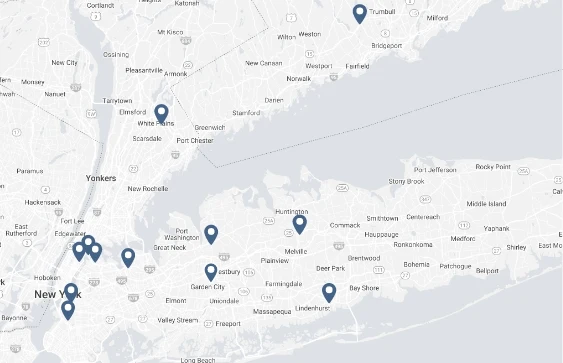Video Transcript
I am Dr. Irena Karanetz. I’m a board-certified plastic surgeon at Long Island Plastic Surgical group with fellowship training in breast reconstruction.
Tissue flap surgery is one of the main types of breast reconstruction outside of using implants, during which patients own tissues are used to recreate the breast mound following mastectomy. During this approach, a flap, which is a piece of tissue that typically includes skin and fat, is taken from one area and then transplanted to the chest to help reconstruct the breast. Some of the main types of flaps include tissues taken from the lower abdomen, thigh area, as well as buttocks. Most commonly DIEP flap is performed, during which lower abdominal tissue is removed and then used to recreate the breast. This also gives a benefit of a tummy tuck because the abdominal skin is tightened so it improves abdominal contour.
Another common type of flap is Latissimus flap, during which the skin fat and muscle from the upper back is taken while attached on its blood supply and used to reconstruct the breast. With this type of reconstruction, the scar is hidden within the upper back at the bra line. Regarding thigh areas, gracilis muscle flap is a flap that involves taking skin fat and muscle from the inner thigh area to reconstruct the breast, and because it’s not an essential muscle of the inner thighs, the donor site deficit and weakness is very minimal.
Last but not least, using flaps from the buttock area, such as GAP, or IGAP allows taking tissues from the upper or lower buttock area where there was excess tissue, and using that skin and fat to reconstruct the breast. Traditionally muscle was taken in addition to skin and fat, more recently with the evolution of microsurgical techniques, the new flaps have been described which minimize any muscle taken, which helps with their recovery and improves function after the surgery.
Some of the benefits of tissue flap reconstruction is that the results are more natural, also because no implant is used the risk of rejection and infection is lower. Because it’s your own tissues it lasts a lifetime, so there was no need to replace it.
Some of the potential disadvantages of flap surgery is that it is a longer surgery with a longer recovery. There are two surgical sites and scars, one from where the flap is taken, and one at the breast where the reconstruction is performed. The scars are permanent, but they do fade in time.
In addition, the donor site, which is where the tissues are taken from, can be associated with possible complications, such as muscle weakness and discomfort, which are minimal, but the risk is present.
The ideal candidate for flap surgery is someone who prefers using their own tissues rather than breast implants. The patient also has to be generally in good health, because it is a longer surgery and recovery. There are also certain previous surgeries that can preclude you from being a candidate for flap surgery. Finally, the patient has to have sufficient donor site tissues in order to help recreate the breast that’s a good match in terms of size and shape.

